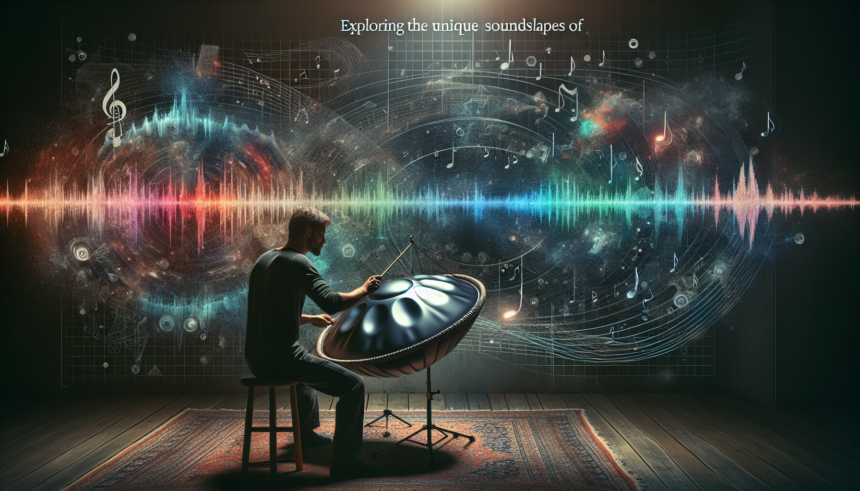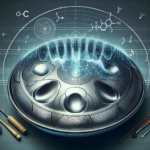PANArt is a Swiss-based company known for creating unique and innovative musical instruments. Founded by Felix Rohner and Sabina Schärer in the early 2000s, PANArt is most renowned for the invention of the Hang, a percussion instrument that has captivated musicians and listeners with its ethereal and soothing sounds. PANArt’s journey goes beyond mere instrument creation; it is a deep exploration into the sonic possibilities and the cultural significance of sound.
The Evolution of PANArt Instruments
The story of PANArt began with steel drum craftsmanship. Inspired by the cultural and acoustic heritage of the Caribbean steel pan, Rohner and Schärer started their journey by developing steel pans crafted from hardened steel in the 1990s. However, their relentless pursuit of new soundscapes led them to experiment beyond traditional boundaries. This experimentation culminated in the creation of the Hang, a drum-like instrument with a UFO-like appearance. The Hang’s design and material innovation allowed for the production of a unique range of tones and textures, making it a revolutionary musical instrument.
The Magic of the Hang
The Hang, also known as the Hang Drum, comprises two hemispherical shells of nitrided steel glued together, with a central note domed at its top and a resonating hole at the bottom. The design incorporates various dimples or tone fields meticulously tuned by hand, each resonating with a specific frequency. Playing the Hang requires a delicate touch, where even the slightest alteration in striking technique can produce a varied timbre.
The magic of the Hang lies in its ability to produce hypnotic, trance-like melodies. Its sound is often described as a blend of a harp, bell, and steelpan, offering harmonic overtones that resonate with meditative and therapeutic qualities. Musicians and enthusiasts from around the world are continually drawn to the Hang’s serene and spiritual aura.
Beyond the Hang: PANArt’s New Creations
Not resting on their laurels, PANArt has continually evolved, introducing new instruments that explore different auditory textures and soundscapes. One such creation is the Gubal, a bass-centric instrument that builds on the principles of the Hang but focuses on deeper and more resonant frequencies. The Gubal features a similar hemispherical structure but incorporates a large central port, which significantly influences its acoustic properties, providing a richer and deeper sound.
Another notable invention by PANArt is the Pang ensemble, a collection of instruments designed to be played together, creating a harmonious and multi-layered auditory experience. This ensemble includes Pang Sui, Pang Sei, and other similar instruments differentiated by their tonal range and resonance. The Pandrum and Hang Bal are other examples of PANArt’s innovative sprite in exploring and creating new soundscapes.
The Cultural and Therapeutic Significance
PANArt’s instruments are not just musical tools; they represent a cultural phenomenon that bridges traditional craftsmanship with contemporary sonic exploration. The instruments have found their way into various musical genres, from ambient and world music to jazz and therapeutic music. They are often used in meditation, sound therapy, and holistic healing practices due to their calming and harmonious sound properties.
The therapeutic potential of PANArt’s instruments is widely recognized. The deep, resonating tones of the Hang, Gubal, and Pang ensemble create an immersive auditory environment that aids in relaxation, stress reduction, and emotional healing. Music therapists and holistic practitioners have integrated these instruments into their practice, finding them to be powerful tools for creating a soothing and introspective atmosphere.
The Community and Global Influence
PANArt’s influence extends beyond the instruments themselves. The community of musicians and enthusiasts who have embraced these instruments forms a global network of sound explorers. This community is built on a shared appreciation for the unique and transformative power of the soundscapes created by PANArt instruments.
The global influence of PANArt is evident in the diverse range of musical styles and cultural contexts in which their instruments are played. The Hang and its successors have been featured in numerous musical recordings, live performances, and interdisciplinary art projects. From street performers captivating audiences in urban landscapes to professional musicians incorporating PANArt’s instruments into their compositions, the reach of PANArt is vast and varied.
Exploring Soundscapes: A Personal Journey
Exploring the soundscapes of PANArt instruments is often described as a deeply personal and transformative journey. Each instrument’s unique voice invites the player to embark on a sonic exploration, discovering new nuances and emotional expressions with every touch. Musicians often describe the experience as a dialog with the instrument, where listening and responding to the subtle variations in sound become an integral part of the creative process.
The tactile nature of playing PANArt instruments also contributes to this personal journey. The physical act of striking the instrument, feeling the vibrations, and listening to the resulting harmonics creates a sensory connection that enhances the overall experience. This hands-on interaction with the instrument fosters a deep sense of immersion, making the exploration of soundscapes an intimate and rewarding endeavor.
Conclusion
PANArt has established itself as a pioneer in the world of musical instrument innovation, creating instruments that offer unique and captivating soundscapes. From the iconic Hang to the resonant Gubal and the harmonious Pang ensemble, PANArt’s creations transcend traditional musical boundaries, offering a rich tapestry of auditory experiences. Their instruments are not only tools for musical expression but also vehicles for cultural and therapeutic exploration. As the global community of PANArt enthusiasts continues to grow, the journey of exploring these unique soundscapes remains an ever-evolving and deeply personal adventure.
Frequently Asked Questions
-
What materials are PANArt instruments made from?
PANArt instruments are primarily made from nitrided steel, a material known for its durability and unique acoustic properties. This material allows for a wide range of tonal expressions and contributes to the distinct sound of each instrument.
-
Can anyone learn to play PANArt instruments?
Yes, anyone can learn to play PANArt instruments. While they may require practice and sensitivity to master, the instruments are designed to be accessible to both beginners and experienced musicians alike.
-
Where can I purchase PANArt instruments?
PANArt instruments are available directly from PANArt or through select distributors and authorized sellers. Due to their handcrafted nature and high demand, availability may vary, and it is often recommended to contact PANArt directly for the most accurate information.
-
Are PANArt instruments suitable for sound therapy?
Yes, PANArt instruments are widely used in sound therapy and holistic healing practices. Their calming and harmonious tones make them ideal for creating a therapeutic and meditative atmosphere.
-
What is the difference between the Hang and the Gubal?
The Hang and the Gubal share similar design principles but differ in their tonal focus. The Hang produces a range of melodic tones with a soothing quality, while the Gubal is more bass-centric, offering deeper and more resonant frequencies. Each instrument brings its unique character and soundscape.





